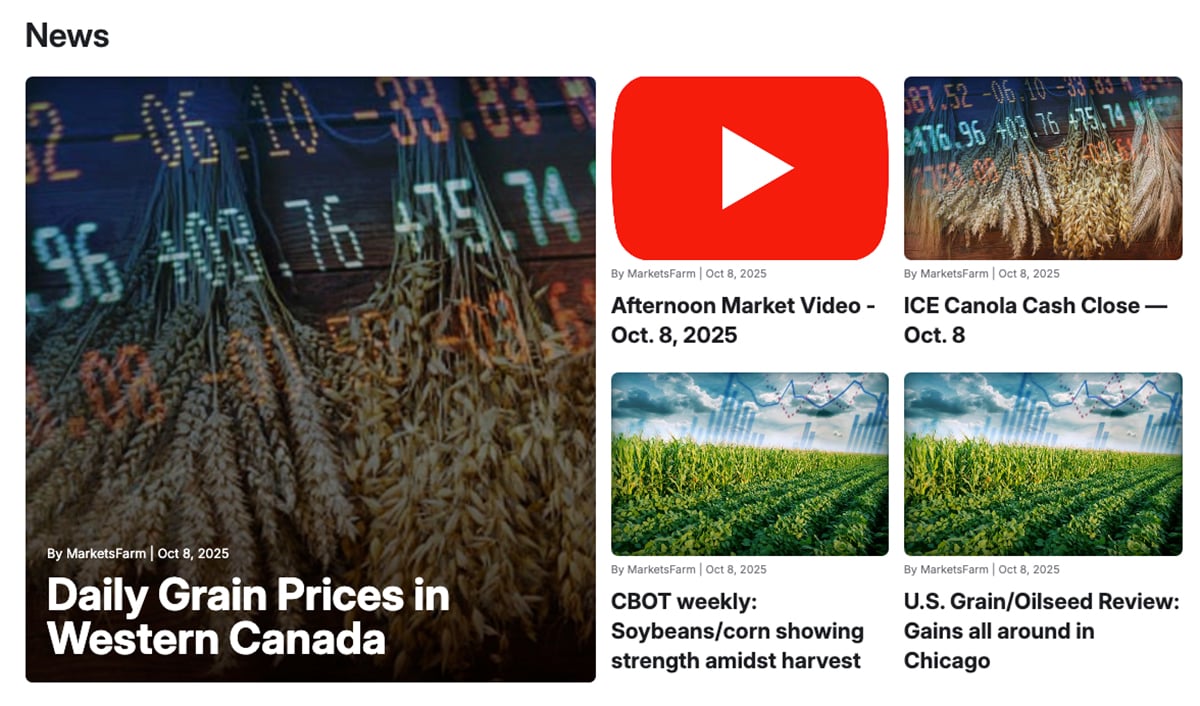This cattle market information is selected from the weekly report from Canfax, a division of the Canadian Cattlemen’s Association. More market information, analysis and statistics are available by becoming a Canfax subscriber by calling 403-275-5110 or at www.canfax.ca.
Fed prices rise
Western Canadian fed markets continued to grind higher last week, setting new annual highs. Prices have been higher in eight out of the past nine weeks, gaining $6 per hundredweight over that time. With fewer grid cattle committed to the packer lately, it resulted in improved buying interest on the cash market.
Read Also

VIDEO: Catch up with the Western Producer Markets Desk
The Western Producer Markets Desk provides daily updates on agricultural markets, with recent video commentary including looks into canola, wheat, cattle and feed grains.
Dressed sales were reported from $302-$304 per cwt. delivered. Cattle were being scheduled for late September/early October delivery. A few dairy cattle traded last week and prices were at a $12 per cwt. dressed discount compared to beef cattle, which is fairly standard.
Western Canadian B4 grade cattle (dark cutters) totaled 872 head, the largest weekly volume seen this year. With warmer temperatures and seasonally more heifers entering the slaughter mix, it is not uncommon to see dark cutter volumes increase during the summer. The increase in B4 grade cattle could also be related to more overnight delivery cattle.
In Ontario dressed sales were reported at $306 per cwt. delivered, steady with the previous week. Statistically there is little chance of seeing prices strengthen from August to September as this has only happened three times in the past 15 years. September is traditionally a weak demand month as summer holiday bills and back to school expenses take their toll on consumers.
In the U.S., dressed sales in Iowa and Nebraska ranged from US$227-$234 per cwt., steady to $4 per cwt. lower than the previous week. Live sales in Nebraska ranged from $143-$145 per cwt., $1-$3 per cwt. lower. Most live sales in Texas and Kansas were at $141 per cwt.
Though steer and heifer carcass weights have been running above last year, Prime and Choice quality grade percentage remains below 2021 and 2020.
U.S. cutouts steady
In U.S. beef trade, cutouts ended last week sideways to slightly lower. The Choice cutout was down almost 2.5 percent to US$258.07/cwt, while the Select cutout held steady at $236.59.
Slaughter cows drop back
Slaughter cow prices again tested highs set back in 2015-16 and overhead price resistance last week pressured prices $2-$3 per cwt. lower. D2 cow prices dipped $2.81 per cwt. lower to average $112.78 per cwt. and D3 cows slipped over $2 per cwt. lower to $97.83. Dressed cow bids were generally $2 per cwt. lower than the previous week to $218-$223 per cwt. delivered on reduced buying interest.
Butcher bulls saw a similar weekly decline with average prices sliding $3.27 per cwt. lower to $128 per cwt. Slaughter bull exports to the U.S. for the week ending Aug. 20 surged 56 percent larger than the previous week to 1,575 head and was 18 percent larger than year ago. Year to date slaughter bull exports were seven percent larger, totaling 24,662 head.
Trim and grind demand should remain supportive and manageable slaughter cow supplies are anticipated this week. An ample offering of butcher bulls at the close of breeding season could limit price upside for September but a softer Canadian dollar should maintain export interest.
Auctions gaining speed
Western Canadian auction volumes continued to trend seasonally larger last week due to a significant increase in yearlings on offer through electronic sales. Prices for all types of feeders continued to strengthen and are challenging price highs set in 2016.
Strong demand for calves continued to outpace supply and 500-700-pound steer prices firmed $3.50- $4.50 per cwt. higher than the previous week. Steer calf prices have surged more than $20 per cwt. higher in the previous three weeks to encourage a significant $10+/cwt. price realignment for heifer calves.
Large feeder heifers over 700 lb. saw a similar realignment to narrow the steer/heifer price spread.
New crop spot Lethbridge barley last week traded around $30 per tonne lower than the same week last year and late summer feeding margins continue to improve. The February live contract is around $20 stronger than year ago and combined with a softer Canadian dollar has improved hedging opportunities. Harvest is progressing nicely and deteriorating pasture conditions will begin to flush more calves to auction in coming weeks.














